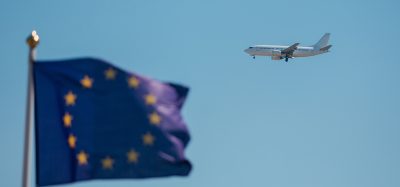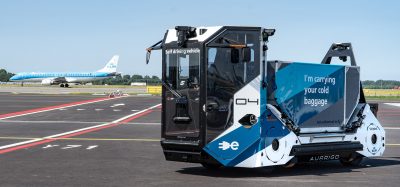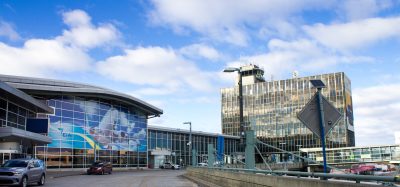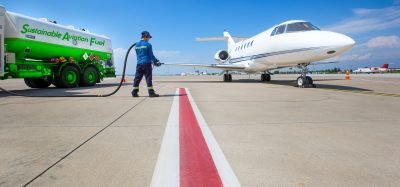Newly formed consortium to deliver major sesar flight demonstration project for augmented approaches to land
- Like
- Digg
- Del
- Tumblr
- VKontakte
- Buffer
- Love This
- Odnoklassniki
- Meneame
- Blogger
- Amazon
- Yahoo Mail
- Gmail
- AOL
- Newsvine
- HackerNews
- Evernote
- MySpace
- Mail.ru
- Viadeo
- Line
- Comments
- Yummly
- SMS
- Viber
- Telegram
- Subscribe
- Skype
- Facebook Messenger
- Kakao
- LiveJournal
- Yammer
- Edgar
- Fintel
- Mix
- Instapaper
- Copy Link
Posted: 17 December 2014 | European Business Aviation Association
A two-year demonstration project will be conducted by a consortium of 15 aviation leaders for the validation of new approach and landing technologies…


A 15 company-strong consortium named A3 (Advanced Approaches for all Airports) and led by NetJets Europe has been formed under the Single European Sky Air Traffic Management Research (SESAR) programme to demonstrate new approach and landing solutions that will increase the capacity of the European airport network while reducing emissions and noise.
The A3 consortium will implement the Augmented Approaches to Land project (AAL), co-financed by the SESAR Joint Undertaking, and will perform over 200 demonstration flights by 2016 to validate new approach and landing technologies involving a significant number of aircraft types, and an extensive range of airport environments.
The AAL project aims to develop and demonstrate several augmented approach procedures for all types of airports, using advanced procedures based on five different technologies: curved Required Navigation Performance paths (RNP), Ground and Satellite-based Augmentation Systems (GBAS and SBAS), Synthetic Vision Guidance System (SVGS), and Enhanced Flight Vision System (EFVS). The aim of the project is to pave the way for the uptake of these technologies, which are needed to overcome the limitations of the current Instrument Landing System (ILS) – equipment which is costly to install and maintain, and which does not offer the flexibility to optimise the flight path in terms of fuel efficiency and noise abatement.
To meet passenger expectations and to decrease disturbances at European airports during high-traffic periods, the consortium will apply enhanced and synthetic vision technologies to increase access for business aviation into small and regional airports in marginal weather conditions. In addition, the use of advanced satellite-based approach procedures will explore new opportunities for accessing large hubs as well as small airports in the vicinity of metropolitan areas, while proving reduced impact on the environment and the population.
Small and large airport operators, key business and commercial aviation stakeholders, and Air Navigation Service Providers (ANSPs) will contribute to the project in order to validate expected benefits, including noise abatement, reduced emissions, lower fuel consumption, and alleviated airport and airspace traffic.
“These latest demonstration projects are a fantastic opportunity to showcase innovations emerging from the SESAR Research and Innovation (R&I) Programme on a large scale and in real operational conditions,” said Florian Guillermet, Executive Director, SESAR. “I am delighted to see so many stakeholders from around Europe taking part; with their support, I am confident that these projects will further convince the broader community that the first SESAR solutions are now fit for wider scale deployment.”
Formulated to bridge the gap between the research and the deployment of SESAR innovations in Europe and around the world, this consortium brings together the following leading aviation companies:
- Airspace users of business and commercial aviation will be represented by NetJets Europe, EBAA, Lufthansa and Swiss;
- Avionics will be supplied and tested by Honeywell Aerospace and Elbit Systems
- Procedural design will be led by DFS, ANS CR, Skyguide with support from DLR and Airbus ProSky. DSNA will provide airport operational procedures study.
- Airframe manufacturer and aircraft systems knowledge will be provided by Dassault Aviation and Airbus.
- Flights will take place at small/medium airports (Perigueux, Bergerac, Bordeaux, Ostrava and Bremen) and large airports (Frankfurt, Zurich). Fraport AG and Zurich Airport will contribute to the consortium.
“The Augmented Approaches to Land project aims at showing the complementarities between several approach solutions into different operational environments. It will demonstrate that augmented vision and satellite-based augmented navigation can improve the access while reducing the environmental impact of all types of Airspace Users into all types of airports.” said Jean-Philippe Ramu, NetJets Europe. “I am proud to see such a wide consortium believing in shared improvements. It would not have been possible without the framework set by the SESAR Joint Undertaking. We believe that the project will show what will be the approach and landing operations of tomorrow.”
Seeing is believing – practical approach and landing solutions
The supporting technologies that will be demonstrated within the project are developed and in the final stages of validation. New airport procedures will be developed and published during the project. The Augmented Approaches to Land project will rapidly generate solutions, speed up deployment, and contribute to the ultimate goal of Air Traffic Management (ATM) modernisation.
The consortium will demonstrate the following new procedures and technologies:
- Curved noise abatement Required Navigation Performance (RNP) legs with transition to either satellite-navigation based approaches (GBAS and SBAS) or to a conventional ILS approach. This will be optionally combined with an increased glideslope of 3.2˚.
- Synthetic Vision Guidance and Enhanced Flight Vision Systems (SVGS and EFVS) enabling lower decision heights and reduced runway visual range, resulting in increased accessibility to the airport in low visibility conditions.
The project also includes flight planning and information access via portable devices in the cockpit, which is of particular interest to airspace users not supported by a Flight Operations Centre (FOC), as is the case for many business aviation operators.
Established in 2007, the SESAR Joint Undertaking is one of the European Union’s most successful public-private partnerships, whereby the entire European Air Traffic Management (ATM) sector engages in a single European effort to overcome the past defragmented approach to ATM. As the technological pillar of the Single European Sky (SES), the SESAR Programme has a critical role to play in developing the necessary technologies and operational procedures to make European air travel more cost efficient, environmentally friendly and even safer.

















